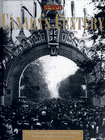Canada & the 20th Century

by MacLean Magazine Staff,
ISBN: 1550139932
Post Your Opinion | | Gift Books
by Ian AllabyFor busy folks who missed the twentieth century, here’s the ultimate rehash. Canada’s Century (Carl Mollins, Key Porter Books, 352 pages, $55 cloth, ISBN: 1550139932) consists of selections from among the 2,500 issues published by Maclean’s magazine since its inception in 1905. It’s a fine book, with something for everybody, although, of course, it touts Maclean’s century as much as Canada’s.
We tend to forget the steep odds the magazine overcame, both when it was a quasi-literary monthly fending off Yankee products such as The Saturday Evening Post, and later when it became a newsmag battling against Time. But clearly the staff let their cultural mission go to their heads. Maclean’s editor-in-chief, Robert Lewis, situates Maclean’s “at the heart of the Canadian experience”, while ex-editor Peter Newman refers to it as Canada’s “house organ”.
Though Canada’s Century is not a history book in the academic sense, Newman and Carl Mollins do supply a convincing historical overview. Roughly, we’ve evolved from a backwater colony into (supposedly) the envy of the world and, at the same time, from innocence into angst. The century started with gold rushes, land rushes, and optimism even though people looked somber in photographs. Then the lads went off to die on Vimy Ridge where, symbolically speaking, our nation was born. The Great Depression wreaked indelible misery but World War II boosted our self-esteem and manufacturing base. Immigration grew ever more exotic. The fin-de-siècle finds the swords of economic dread, separatism, and US dominance dangling over our noggins.
Against that backdrop, Canada’s Century divides the century into twenty-six departments—women, Native peoples, the environment, the space program, sports, etc.—with readings from 107 Maclean’s contributors past and present, including such non-journalists as R.S. McLaughlin, manufacturer of the McLaughlin motor car, and Marshall McLuhan. There are over 300 photos, all sepia—so even 1998 bathes in the glow of nostalgia. Most of the shots are unfamiliar, such as one of a young correspondent, René Lévesque, interviewing troops in the Korean War. Famous photos include Africville devastated in the 1917 Halifax explosion, jobless men clambering atop freight cars in 1935, the soldier and the Mohawk at Oka in 1990. Generally, the older the scene, the more interesting.
Some of the writing is disappointing, such as the collage of trivia that passes for commentary on the 1960s. A punchless Allan Fotheringham column closes the book. Nevertheless, random dipping is rewarded with many excellent trouvailles such as Sidney Katz’s 1958 exposé of apartheid in a southern Ontario town. Ralph Allen in 1955 criticizes the Cold War custom of regarding Canada-Russia hockey tournaments as showdowns between capitalism and communism. No doubt his words seemed wise once the Russians started winning.
The book perhaps underestimates the obdurate loyalty to the British Empire that characterized many Canadians’ pre-Hiroshima worldview. However, admirably, Canada’s Century does not disown certain early pieces steeped in the white-man’s-burden perspective on Native peoples and immigrants. The universe of acceptable discourse was different back then. F.P. Grove in a 1928 article comes closer to today’s ethos when he asserts that every newcomer contributes to the construction of the Canadian ideal.
Canada’s Century largely neglects urban and provincial politics except for Newfoundland (joining up) and Quebec (threatening to leave). The book crams into a single chapter the two great wars that cost us 100,000 lives, while devoting five chapters to arts and entertainment on the premise that we’ve achieved a cultural blossoming. In fact, Canada’s Century contains almost as much writing from the 1990s as from the entire first half of the century—the bulk of history having occurred, presumably, since Maclean’s went weekly in 1978.
In the end, the sheer volume of material has its effect: you begin to think something happened on this half-continent and Maclean’s had it covered. But did the twentieth century belong to Canada? Of course not. It belonged to the USA. In a 1948 article, Arthur Lower argued that we would be materially better off to unite with the Americans—except that we would lose our soul. Maclean’s does its bit to preserve that soul. Resistance is the magazine’s raison d’être. Still, the most editor Mollins promises is that Canada stands “poised to survive a troubled transition into a new millennium.”
Break out the bubbly: Canada—Poised to Survive!
|